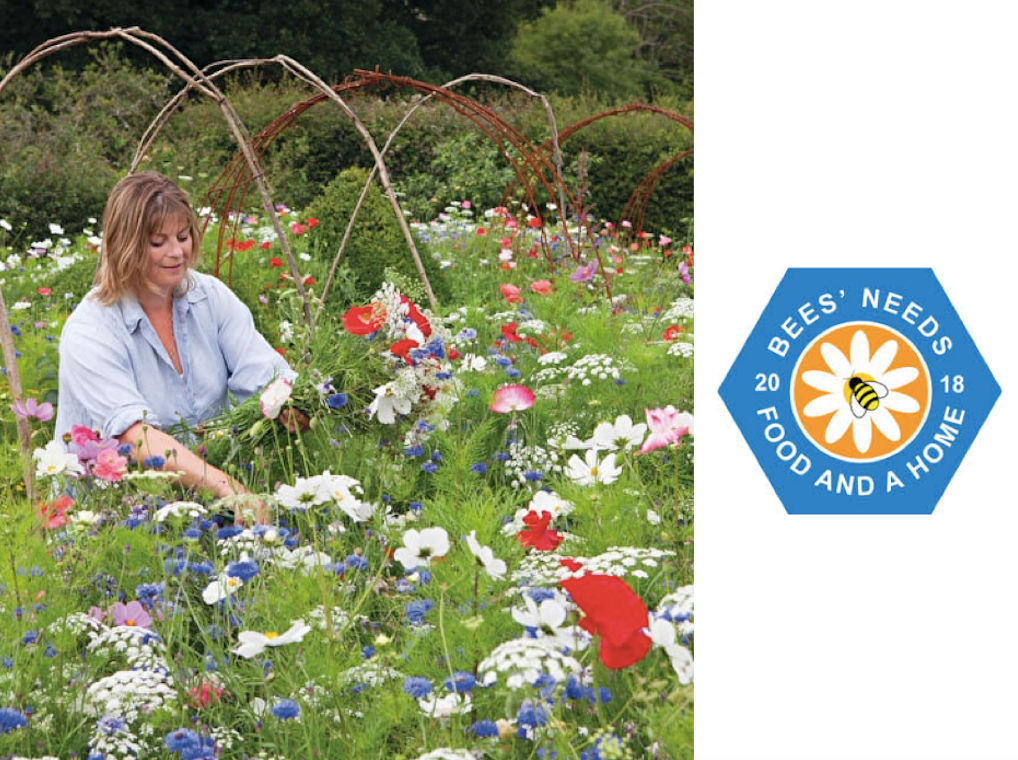
We Talk Bees Needs with Sarah Raven
This week, the 9th to the 15th of July, is Bees Needs Week 2018, coordinated by Defra. It is a yearly spotlight on the food and housing needs of our bee species - of which there are approximately 220 different species in the UK! The week is just one part of a wider National Pollinator Strategy.
We caught up with bee-loving gardening author and TV presenter Sarah Raven to get her top tips on gardening for Bees Needs.
Sarah, if you consider yourself a terrible gardner who seems to kill everything they try and grow, which one bee friendly plant would you recommend growing?
A single dahlia variety such as Waltzing Mathilda [pictured below] or any of the Bishop series.
Plus Cosmos ‘Purity’.

Dahlia 'Waltzing Matilda' - an easy one to grow for those of us who aren't green fingered!
If you only have a windowsill or a few pots in the middle of a city, what could you plant for bees?
Oregano or a very long flowering and compact salvia such as ‘Nachtvlinder’.
Often beekeepers talk of a “June gap” between the spring flowers and the late summer blooms, which plants do flower at this time of year to help provide some midsummer nectar and pollen?
Biennials are brilliant for this such as Foxgloves. They are like a tower block of bee cafes with flowers one on top of another in June, each one stacked with nectar.
Do you have to have a big space to plant meadow mixes?
No - I have had mini meadows concentrating on the linaria - or toadflax- family in a smallish pot. It looks sort of meadow like and is brilliant for bees.
When the bees start flying again in Spring and growing the colony numbers they’re in real need of pollen and nectar, what early flowering plants are there?
Crocus are perfect for this, each flower stuffed with pollen. And you can get a range of varieties which flower through February and March.

Crocus tommasinianus, an early crocus variety. Available through Sarah Raven
I’m always concerned by the insect killing sprays and applications you can get in the garden centre, are they necessary to keep your garden looking good?
Absolutely not. Plant things widely, that really helps with aphid infestation and encourage the good bugs in eg ladybirds and lacewings whose larvae eat the bad bugs. Plant yellow and orange flowers such as poached egg plant and calendulas to draw the good things in.
Any other top tips on gardening for bees which we should know about?
Grow single or semi double flower forms. If you can see the centre of the flower, that’s a good marker that the plants nectaries are still there and have not been bred to be extra petaloids, as in fully double forms.
Thank you so much Sarah! Now I had better get out into the garden to put these into action!
Check out Sarah's website where many of the plants mentioned can be purchased and for even more gardening inspiration.
Keep your eyes and ears peeled for events near you this weekend. For Londoner's the world famous Carnaby Street has been renamed 'Carnabee Street'. Get involved on social media using #beesneeds.
London Honey Company founder and head beekeeper Steve Benbow will be visiting Sarah Raven's Farm, Perch Hill, in East Sussex delivering an introduction to beekeeping on the 9th of August.
Sarah Raven is passionate about sharing her knowledge and love of gardening and cooking. Raven's publications include The Cutting Garden , Vita Sackville - West's Sissinghurst - The Creation of a Garden and Sarah Raven's Garden Cookbook. Sarah has presented on BBC Gardeners' World amongst other TVs.
